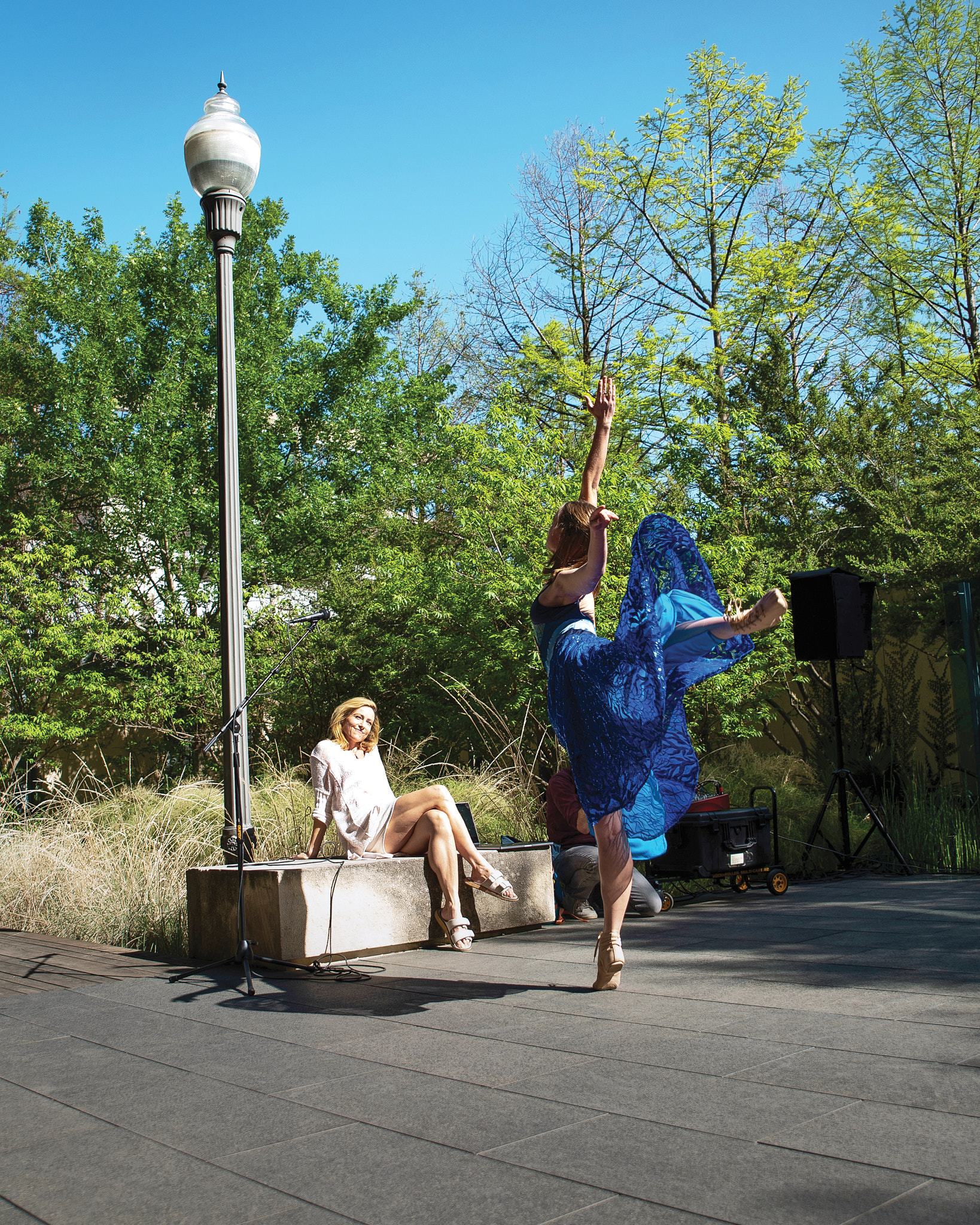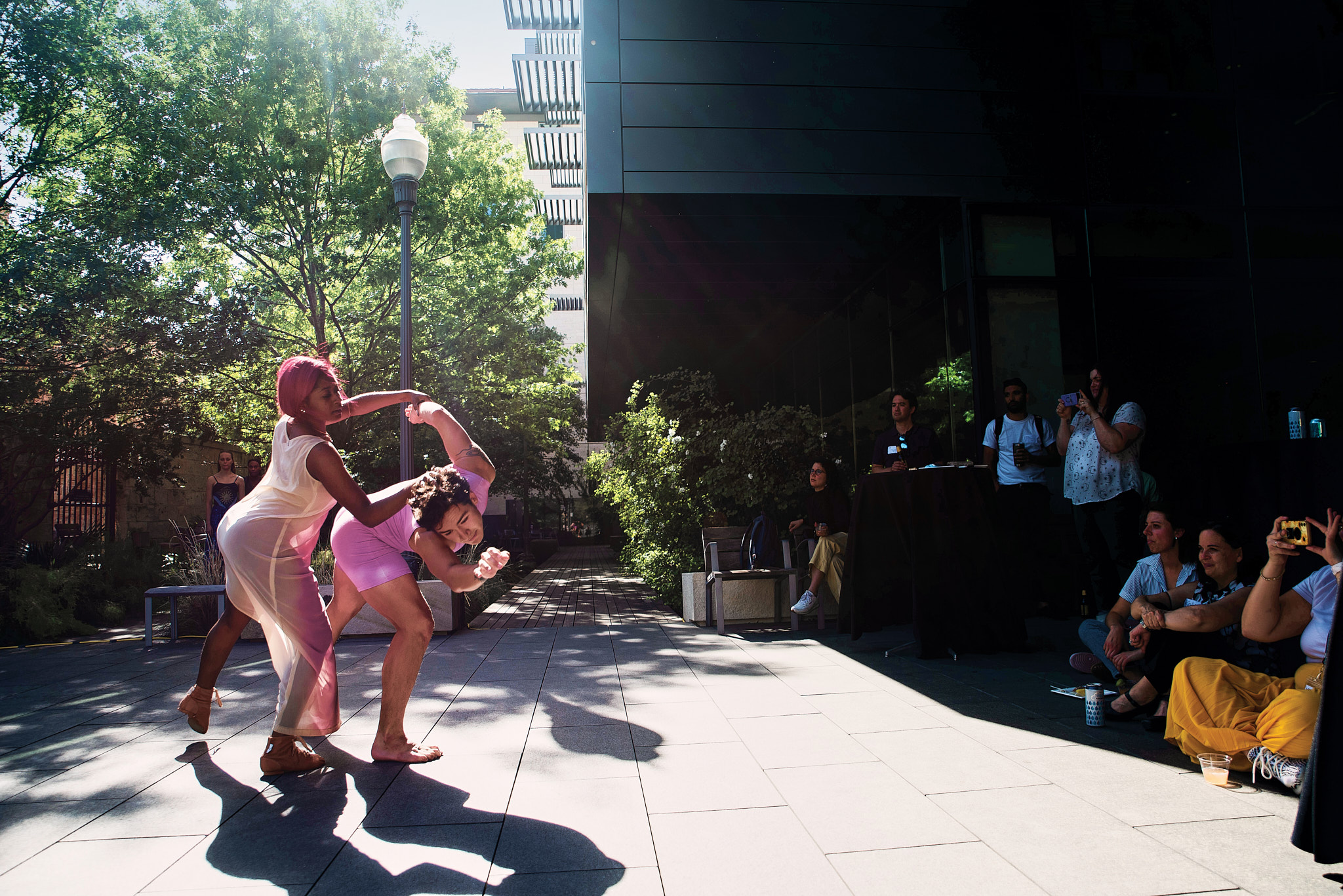Research Initiative Planet Texas 2050 Uses Art to Tell Story of Climate Change

In 2018, researchers at The University of Texas decided to take a hard look at an important milestone. Texas’ population is expected to double to 55 million people by 2050. Such rapid growth, set against the existential issue of climate change, led them to embark on an eight-year-long quest for solutions that will make the state more resilient. The project is called Planet Texas 2050, and there is a large cast of characters behind it—architects, archaeologists, city planners, public health experts, geologists, engineers, and computer scientists—as well as some you don’t always find in scientific research: artists.
Since its launch, Planet Texas has been working with artists and creatives who have taken the experiences of climate change and turned them into digital artwork, photographs, dance performances, and more. While this is research-based, it was important to bring in the arts from the beginning, according to program director Heidi Schmalbach.
“It was always central to the values and understanding [of Planet Texas], that you cannot adequately address the climate crisis [with only data],” Schmalbach says. “Climate science, arts, humanities, and social sciences are all equally important and needed in addressing these challenges.”
And the challenges have already been great, from natural disasters of increasing frequency and severity to ongoing heat waves and droughts. But one of the greatest challenges is getting the message across to the public that these things are happening—and for a reason. That’s where Schmalbach sees the arts becoming the most effective tool.
“If data alone were enough, there would be no controversy here. There is no argument about what science tells us is happening, and yet there’s a whole bunch of people who either deny it entirely or don’t think it matters—don’t see how it involves them because it’s too far in the future,” Schmalbach says. “The data alone is not enough. We need storytelling.”

Work has already been on view for the public from artists involved in Planet Texas. For example, in 2018, Marie Lorenz produced “Graybelt,” a video map of the Texas Colorado River in different stages of drought. The 2022 research symposium featured three dance performances with choreography by Assistant Professor of Practice in Dance Dorothy O’Shea Overbey and MFA students Angelica Monteiro and Tiffany Merritt-Brown. And in September, UT’s audio production house, The Drag, released the podcast Planet Texas, which covers climate-related topics and disasters in Texas, including the 2021 winter storm, Hurricane Harvey, and flooding in Austin.
Planet Texas approached The Drag about doing a podcast, and students Aurora Berry and Will Brooks, BJ ’21, spent more than a year researching, reporting, and writing to produce the five-episode series, often in conversation with Planet Texas researchers.
Berry has her own experience with climate-related disasters: She’s a Bastrop native and was only 10 years old in 2011 when severe wildfires swept through the small town east of Austin. As host of the podcast, she tapped into that experience to tell stories of others who are directly affected by climate change, including in an episode about her hometown.
“We were doing a lot of that initial reporting and getting in touch with a lot of our sources who ... are not necessarily climate activists or climate communicators in any way,” Berry says. “A big part of what we were doing was focusing on finding those real people who had been impacted [by climate change].”
A new cohort of artists officially joined the project in September, and the artist collaboration aspect of the project for this round has changed a bit. For this academic year, six artists and one nonprofit arts organization will each be paired with a different research department, and there will be no product expectation—meaning the artists aren’t required to create any pieces. Instead, it will operate almost like a research fellowship, where the artist will learn from the researchers about climate change and the science behind it, and the researchers will get to see their work communicated in a new way.
For Katy McCarthy, that’s a rare thing to find. McCarthy, a lecturer in the College of Fine Arts who has already worked with Planet Texas through her freshman drawing classes, is a multidisciplinary artist interested in exploring ideas that are closely linked with science. She’s joining this year’s cohort, having already shown work at the Wildflower Center and created work about fires in her home state of California, and McCarthy plans to spend as much time in the lab as possible with her paired research team. She’s not sure yet what will come out of that lab time but she’s already optimistic about the opportunity.
“A lot of my work up until this point is thinking about environment, especially from a female perspective ... and trying to merge facts with fiction to create something more than the sum of its parts. So, I feel like that is part of why I’m excited and part of why I wanted to participate,” McCarthy says. “People talk a lot about wanting to invite arts in as research partners, but it’s so rare for it actually happen.”
Besides creating an opportunity for artists to work closely with scientists engaging in this problem we all face, there’s another reason to get them involved: to show us that all is not lost—but there is work to be done. Berry saw it firsthand while working on Planet Texas.
“More often than not as a younger person, something that I have been seeing a lot is this story of doom, and I feel like it’s easy to look at a lot of the science and feel that. I don’t think that is a misplaced emotion, to be afraid and to be sad, to be angry. I also feel that,” Berry says. “But when you really look at the data and you talk to these scientists, they are not saying that we should all just lie down and rot. They have hope.”
Getting that message across might just be the key to finding the solutions needed in this changing world.
“Creative expression is so fundamental to our shared humanity,” Schmalbach says. “If we lose that capacity to collectively imagine a future together, a better future, then it is game over.”
CREDITS: Courtesy Planet Texas 2050, UT Fine Arts, Shutterstock






